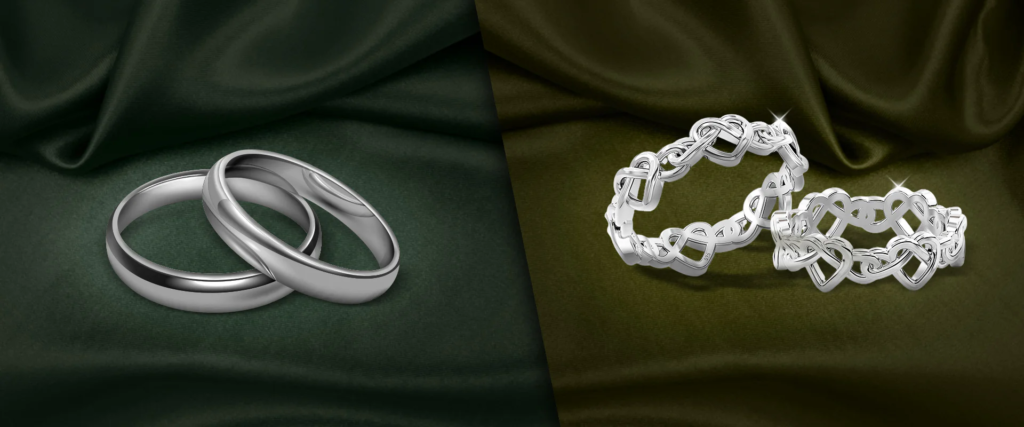The Difference Between Silver and Sterling Silver: A Guide for Shoppers

When shopping for jewelry, home decor, or collectibles, you’ll often encounter terms like “silver” and “sterling silver.” While they may sound interchangeable, they are distinct in composition, properties, and uses. Understanding the difference is essential to make informed purchasing decisions.
What Is Silver?
Silver is a naturally occurring precious metal known for its bright luster and high malleability. In its pure form, silver is referred to as fine silver or 999 silver, meaning it is 99.9% pure. This purity level gives it a stunning appearance but also makes it soft and prone to damage. For this reason, pure silver is rarely used for crafting everyday items, such as jewelry or utensils, as it is too delicate to withstand regular wear and tear.
Key Features of Silver:
- Purity: 99.9% silver (with 0.1% trace elements)
- Applications: Bullion coins, high-end investment-grade items
- Softness: Prone to scratching, bending, and tarnishing
What Is Sterling Silver?
Sterling silver is an alloy, meaning it’s a combination of silver and other metals, typically copper. The standard composition of sterling silver is 92.5% silver and 7.5% other metals (most commonly copper or nickel). This blend enhances the strength and durability of silver, making it more practical for everyday use.
Items made of sterling silver are often stamped with a hallmark, such as “925” or “Sterling”, to indicate their composition. The addition of copper can slightly alter the color of sterling silver, but it retains its signature shine and elegance.
Key Features of Sterling Silver:
- Purity: 92.5% silver
- Applications: Jewelry, tableware, and decorative items
- Durability: More resistant to scratches and dents than pure silver
Differences Between Silver and Sterling Silver
| Feature | Silver (Pure) | Sterling Silver |
|---|---|---|
| Composition | 99.9% silver | 92.5% silver, 7.5% alloy |
| Durability | Soft and malleable | Strong and long-lasting |
| Appearance | Bright and shiny | Slightly less lustrous than pure silver |
| Uses | Investment items, coins | Everyday items, jewelry, utensils |
| Tarnish Resistance | Prone to tarnishing | Tarnishes but can be polished easily |
Which One Should You Choose?
The choice between silver and sterling silver depends on your needs and preferences:
- For Investment: If you’re looking to invest in precious metals, fine silver is the better option due to its higher purity.
- For Durability: Sterling silver is ideal for jewelry, utensils, or items you plan to use regularly, thanks to its enhanced strength.
- For Sentimental Pieces: Sterling silver offers the perfect balance between quality and durability for heirloom-quality jewelry.
How to Care for Your Silver and Sterling Silver Items
Both silver and sterling silver require proper care to maintain their beauty:
- Prevent Tarnish: Store items in anti-tarnish bags or cloths to minimize exposure to air and moisture.
- Clean Regularly: Use a soft cloth and gentle silver cleaner to polish your pieces periodically.
- Avoid Harsh Chemicals: Keep your silver away from chemicals, perfumes, and cleaning agents.
Final Thoughts
Understanding the differences between silver and sterling silver can help you make better purchasing decisions and take proper care of your items. Whether you’re looking for an investment piece or everyday jewelry, knowing the characteristics of these two materials ensures you choose the best option for your needs.
Explore RTC’s collection of premium silver and sterling silver items to find timeless pieces that suit your style and purpose.

